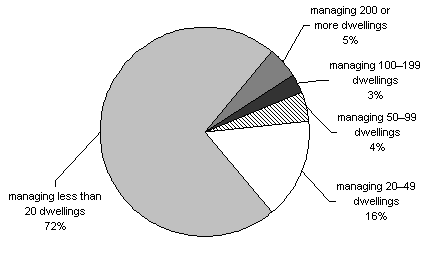Summary
The community housing data collection captures data held by state and territory housing authorities on all community housing organisations managing government-funded dwellings. Approximately 930 community housing organisations were managing around 42,000 tenancy (rental) units at 30 June 2009.
In order to capture household level information, the community housing data collection also involves surveying community housing organisations about their organisation, their dwellings and about the tenancies they manage. The survey concluded that nearly 38,000 households were living in community housing in Australia at 30 June 2009 occupying over 96% of tenantable community housing stock. Over 30% of these households contained a member with a disability and 7% identified as Indigenous households.
Community housing continues to be a form of social housing in strong demand with nearly 50,000 applicants on community housing organisation waiting lists at 30 June 2009 with 45% of these applicants being in ‘greatest need’. 1
Nearly 10,000 households were newly allocated a community housing dwelling during 2008–09 with over one-third of these households homeless at the time of allocation.
Like all forms of social housing, community housing provides an affordable alternative to private rental. On average, for community housing tenants, nearly 73% of household income is left after paying rent.
Most community housing organisations (88%) each manage less than 50 dwellings, whilst less than 5% of organisations each manage 200 or more dwellings (Figure 1).
Figure 1: Proportion of community housing organisations by organisation size, 30 June 2009

Over 40% of community housing organisations were able to offer some form of support service to their tenants including information, advice and referral to other services and daily living support.



